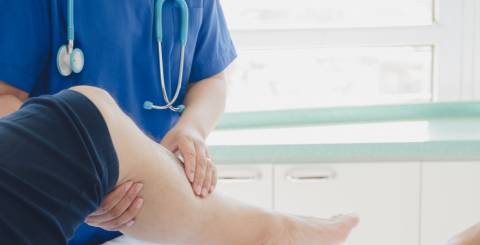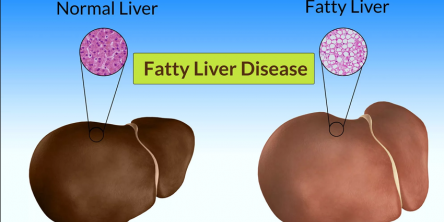7 Signs You Should See a Vein Doctor

Many people get varicose veins removed in order to restore the beauty of their skin. You may not have considered vein removal since aesthetics may not be your prime focus. Even if you're not concerned with cosmetic vein problems, there are times when you need to be. They have the potential to cause major issues.
How to determine when it's time to see a professional? Here are eight indicators that you should visit a vein treatment center:
1. One of your legs is hurt and swollen
This can be a symptom of poor blood flow. Although varicose veins don't hurt, the pressure they cause as your legs swell might cause aches and discomfort. Legs that are swollen may also feel heavy and painful.
By using compression stockings and keeping your feet elevated, you can get relief from these common varicose vein symptoms. But if you try it and it doesn't help, or if only one of your legs hurts, feels heavy or inflamed, or is retaining water, this might be an indication of poor blood flow.
2. You have fatigue in your legs
In most cases, standing for a long time shouldn't make your legs feel heavy, weak, or exhausted. However, if yours do and it occurs frequently, you should speak with a vein specialist to see whether your legs' veins are clogged or have another issue.
3. You had vein problems when being pregnant
Your blood circulation might be taxed during pregnancy. Varicose veins and hemorrhoids develop as a result of increased blood pressure, which puts additional strain on the veins' delicate walls. Speaking with a vein expert before becoming pregnant again may help you avoid getting varicose veins or hemorrhoids if you have had them in the past.
4. You’re dealing with chronic leg pain
Even while chronic pain can be brought on by a number of conditions, including shin splints, muscle strain, and arthritis, it can also be an indication of vein disease. If you have persistent pain that has no clear reason, a visit to a vein doctor can provide you with the information you need and help you avoid more serious illnesses.
5. Skin on your feet or ankles is dry and itchy
Dry, itchy skin may be really annoying. However, if the irritation makes its way to your feet or ankles, it can be a sign that your legs' circulation system is in trouble. This occurs on your ankles and feet because your blood must travel such a long distance to get there and occasionally does not reach the destination. If the soreness persists despite your efforts to alleviate it with moisturizer, it's important to speak with a vein doctor.
6. Venous disease runs in your family
It would be an understatement to suggest that there is a significant biological connection between vein problems, veinous disease, and genetics. You have a 40% risk of developing varicose or spider veins if one of your parents has or has had these conditions. Your odds rise to 90% if both of your parents have them. Be proactive if you are aware of your family history.
Your risks may be best evaluated by a vein expert, who can also recommend lifestyle adjustments that can lower them.
7. You have leg sores that don’t heal
Cuts and sores that don't heal are more than simply a nuisance. They may be warning signs of a deeper problem. For example, you may have a circulation issue if you see that minor scratches or cuts on your legs take longer to heal than they do on other parts of your body. A vein specialist should examine any sore that doesn't heal after a few weeks to see if a vein is the source of the problem.
Similar Articles
Back pain – it’s not just a matter of “I lifted a heavy box, and now my back hurts.” It’s often the result of a complex dance between our minds and bodies, with stress, anxiety, and emotions playing lead roles. If you’ve ever woken up with a stiff back after a tough week or felt your spine twinge just from reading a long email chain, you’re not alone.
Chronic pain is a medical problem that affects many people around the world. Unlike acute pain, which is a short-term response of the body to tissue damage, chronic pain lasts longer, often without obvious physical damage. It can last from several months to several years, and its consequences can affect all aspects of a person's life
When was the last time you gave your veins some love? These hardworking highways of blood don’t ask for much—just a little support and, occasionally, professional attention when they’re not performing at their peak.
These small plastic containers are a household staple, but disposing of them incorrectly only adds to the growing waste issue. Learning to eco-dispose pill bottles reduces your footprint and shows love and respect to the planet and future generations.
We often experience small discomforts or symptoms that seem insignificant, like headaches, fatigue, or brittle nails. Many times, we brush them off, thinking they’ll go away on their own. However, these minor issues might be your body’s way of telling you that something more serious is going on.
According to the World Health Organization (WHO), half to three-quarters of adult persons globally experienced a headache in the past year. Unfortunately, tension headaches are one of the most prevalent symptoms you can have. Furthermore, some tension headaches resemble migraine headaches, making matters worse.
The review of Yakrit Plihantak Churna is going to be amazing. You will know the facts, does it works along its benefits. The liver is the main engine of the body. It is the second largest gland in the body.
A podiatrist is a doctor who focuses on treating foot and ankle ailments. If you have specific medical issues, you may need to see a podiatrist for therapy that your primary doctor cannot offer. Don't overlook pain in your lower leg, foot, ankle, or toes.
A podiatrist is a medical expert who focuses on foot and ankle care. There are various reasons you may need to see one.









